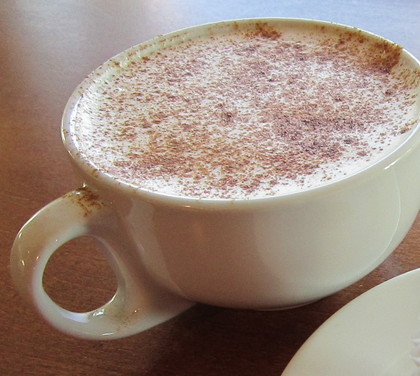About Life of Shri Guru Nanak dev Sahib ji
Artist Bodh Rai's immpression of Guru Nanak Dev ji
Sri Guru Nanak Dev ji was born in 1469 in Talwandi, a village in the Sheikhupura district, 65 kms. west of Lahore. His father was a village official in the local revenue administration. As a boy, Sri Guru Nanak learnt, besides the regional languages, Persian and Arabic. He was married in 1487 and was arouse with two sons, one in 1491 and the second in 1496. In 1485 he took up, at the instance of his brother-in-law, the appointment of an official in charge of the stores of Daulat Khan Lodhi, the Muslim ruler of the area at Sultanpur. It is there that he came into contact with Mardana, a Muslim minstrel (Mirasi) who was elder in age. Gurdwara Nankana Sahib
By all accounts, 1496 was the year of his enlightenment when he started on his mission. His first report after his prophetic communion with God was "There is no Hindu, nor any Mussalman." This is an announcement of supreme significance it declared not only the brotherhood of man and the fatherhood of Father, but also his clear and primary interest not in any metaphysical doctrine but only in man and his fate. It means love your neighbour as yourself. Gurdwara nankana sahib In adding, it emphasised, simultaneously the inalienable spirituo-moral combination of his message. Accompanied by Mardana, he began his missionary tours. Apart from conveying his message and rendering help to the weak, he forcefully preached, both by precept and practice, against caste distinctions ritualism, idol worship and the pseudo-religious beliefs that had no spiritual content. He chose to mix with all. He dined and lived with men of the below castes and classes Considering the then prevailing cultural practices and traditions, this was something socially and religiously unheard of in those days of rigid Hindu caste system sanctioned by the scriptures and the religiously approved notions of untouchability and pollution. It is a matter of great understanding that at the very beginning of his mission, the Guru's first companion was a low caste Muslim. The offerings he received during his tours, were distributed among the poor. Any surplus collected was given to his hosts to maintain a general kitchen, where all could sit and eat together without any distinction of caste and status. This institution of common kitchen or langar became a major instrument of helping the poor, and a nucleus for religious gatherings of his society and of establishing the basic equality of all castes, classes and sexes. Gurdwara Sacha Sauda
When Guru Nanak Dev ji were 12 years old his father gave him twenty rupees and asked him to do a trade, apparently to teach him business. Guru Nanak dev ji bought food for all the money and distributed among saints, and poor. When his father asked him what happened to business? He replied that he had done a "honest business" at the place where Guru Nanak dev had fed the poor, this gurdwara was made and named Sacha Sauda.
Despite the hazards of travel in those times, he performed five long tours all over the country and even outside it. He visited most of the known religious places & centres of worship. At one time he preferred to dine at the place of a low caste artisan, Bhai Lallo, instead of accepting the invitation of a high caste rich landlord, Malik Bhago, because the latter lived by exploitation of the poor & the former earned his bread by the sweat of his brow. This incident has been depicted by a symbolic representation of the reason for his preference. Sri Guru Nanak touch in one hand the coarse loaf of bread from Lallo's hut and in the other the food from Bhago's house. Milk gushed forth from the loaf of Lallo's and blood from the delicacies of Bhago. This prescription for honest work & living and the condemnation of exploitation, coupled with the Guru's dictum that "riches cannot be gathered without sin and evil means," have, from the very beginning, continued to be the basic moral tenet with the Sikh mystics and the Sikh society.
During his tours, he visited numerous places of Hindu and Muslim worship. He explained and exposed through his preachings the incongruities and fruitlessness of ritualistic and ascetic practices. At Hardwar, when he found people throwing Ganges water towards the sun in the east as oblations to their ancestors in heaven, he started, as a measure of correction, throwing the water back the West, in the direction of his fields in the Punjab. When ridiculed about his folly, he replied, "If Ganges water will reach your ancestors in heaven, why should the water I throw up not reach my fields in the Punjab, which are far less distant ?"
He spent twenty five years of his life preaching from place to place. Many of his hymns were composed during this period. They represent answers to the major religious and social problems of the day and cogent responses to the situations and incidents that he came across. Some of the hymns convey dialogues with Yogis in the Punjab & elsewhere. He denounced their methods of living and their religious views. During these tours he studied other religious systems like Hinduism, Jainism, Buddhism and Islam. At the ditto time, he preached the doctrines of his new religion & mission at the places and centres he visited. Since his mystic system almost completely reversed the trends, principles and practices of the then prevailing religions, he criticised and rejected virtually all the old beliefs, rituals and harmful practices existing in the country. This explains the necessity of his long and arduous tours & the variety and profusion of his hymns on all the religious, social, political and theological issues, practices and institutions of his period.








